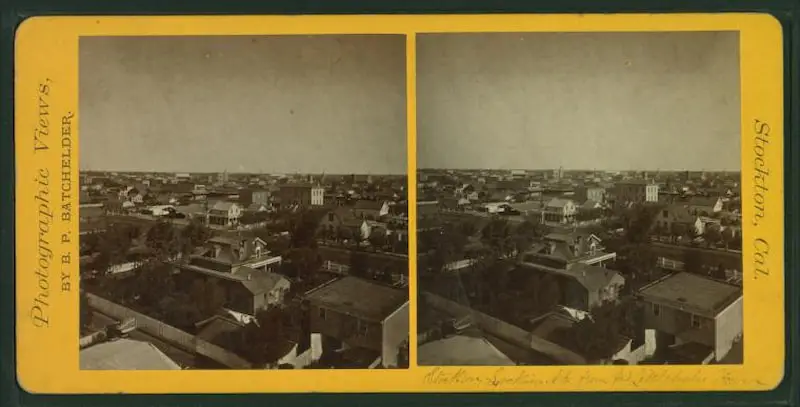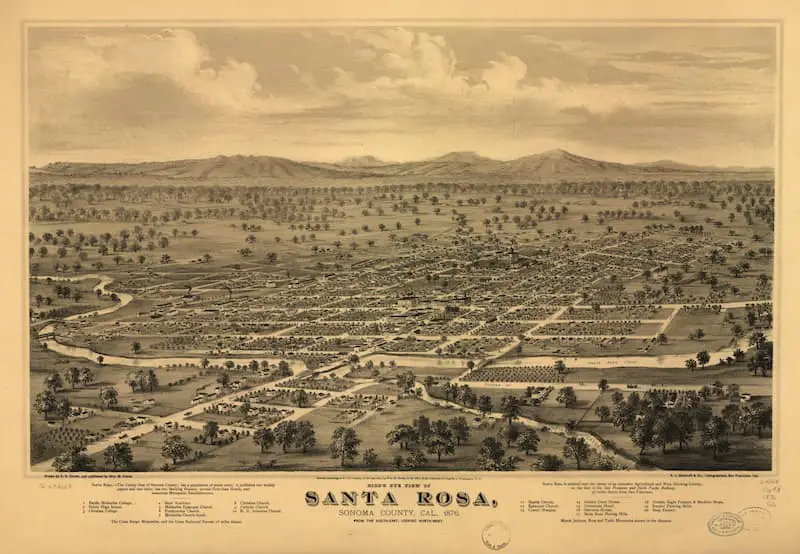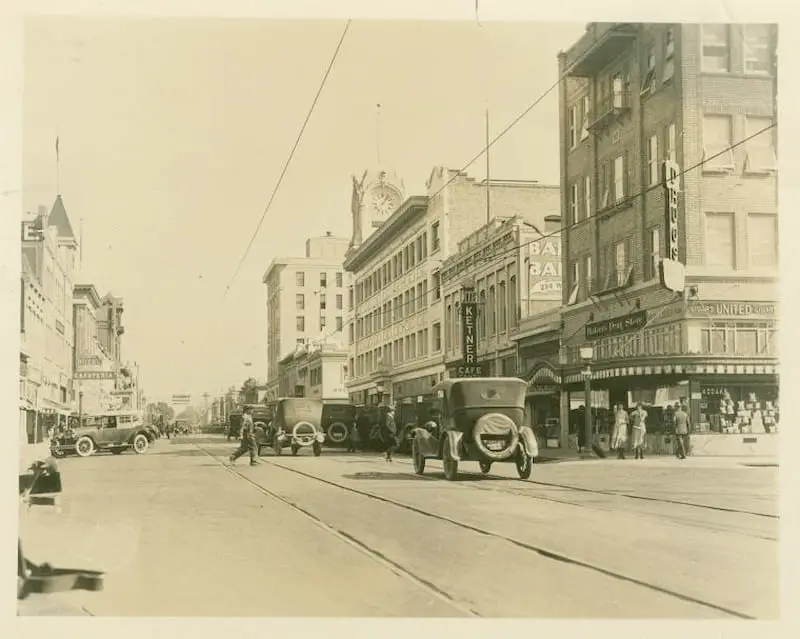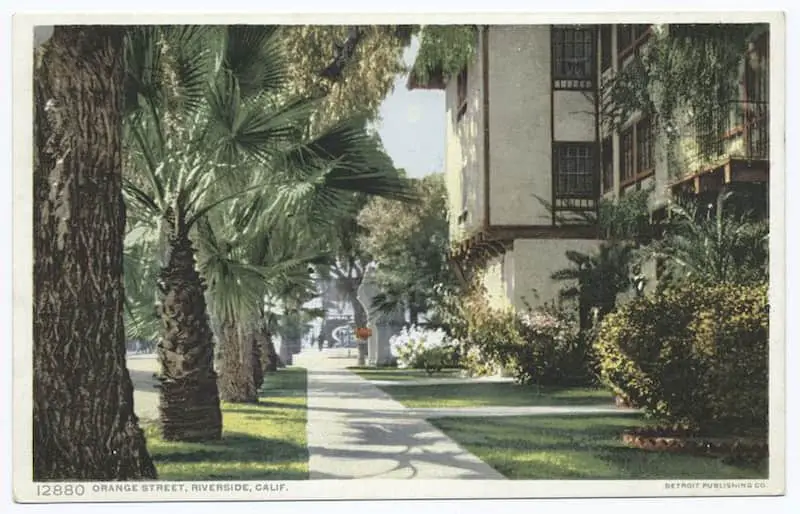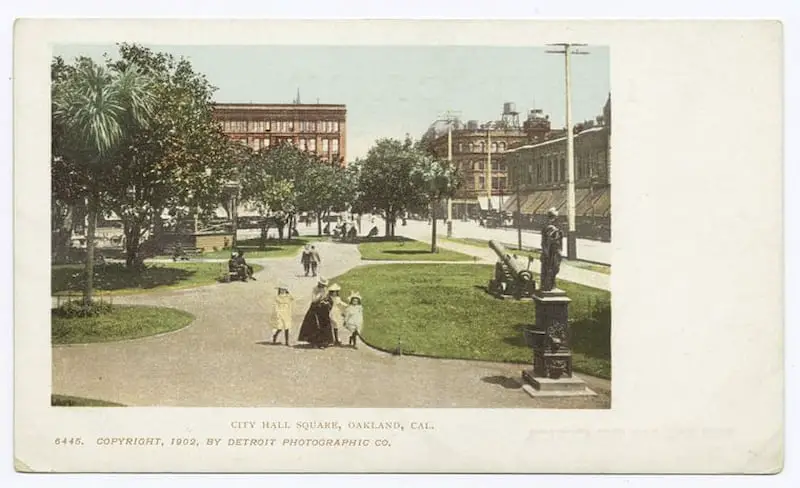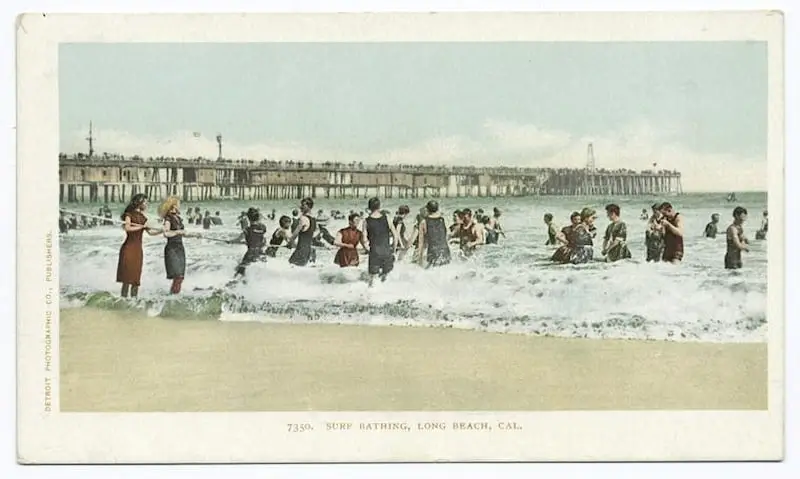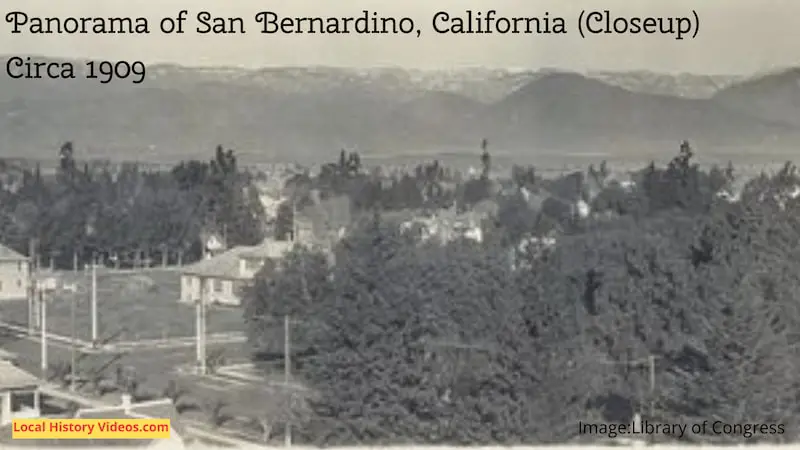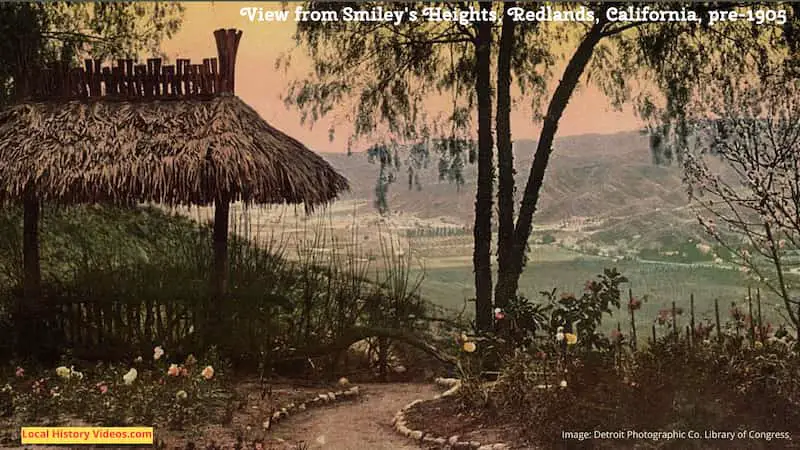Glimpse history through old images of San José, California, in the USA.
Old Photos of San José
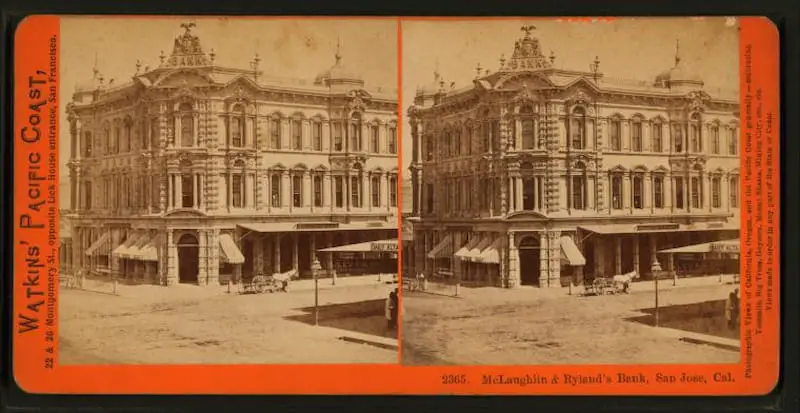
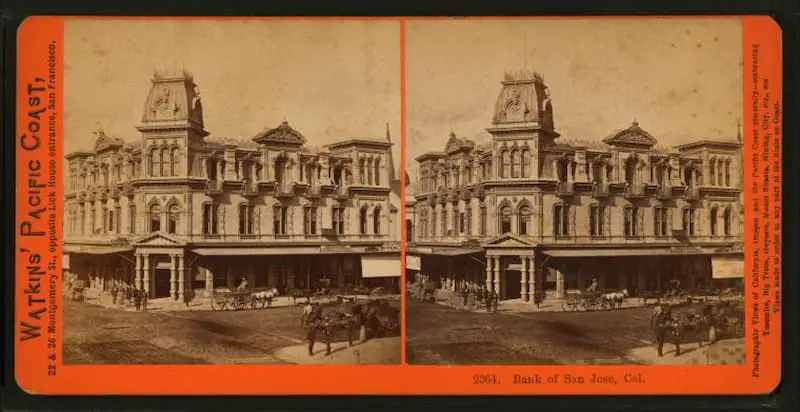
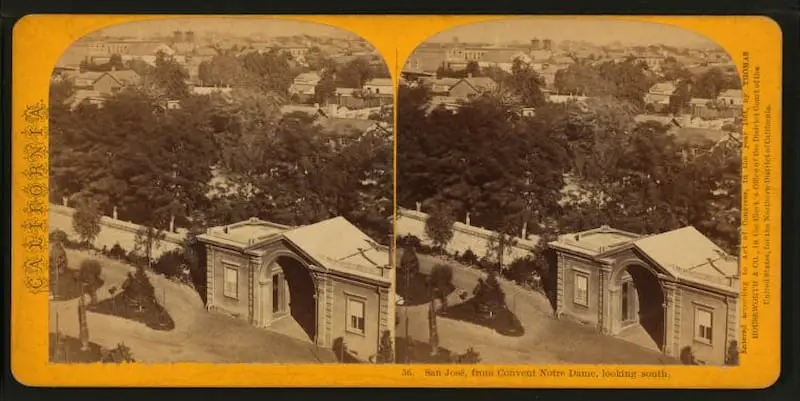
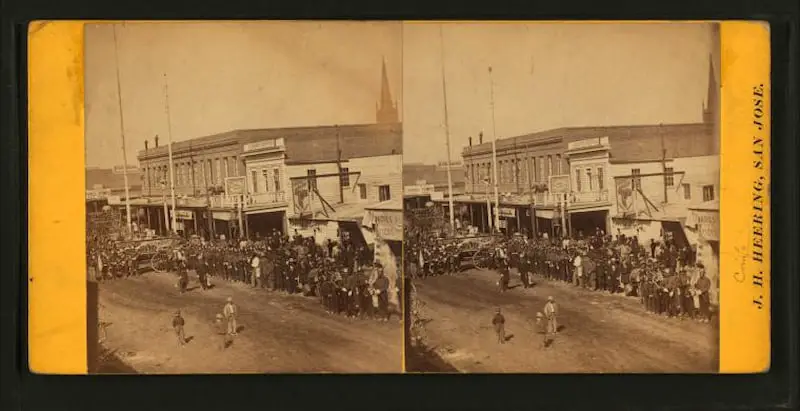
The Lick Observatory
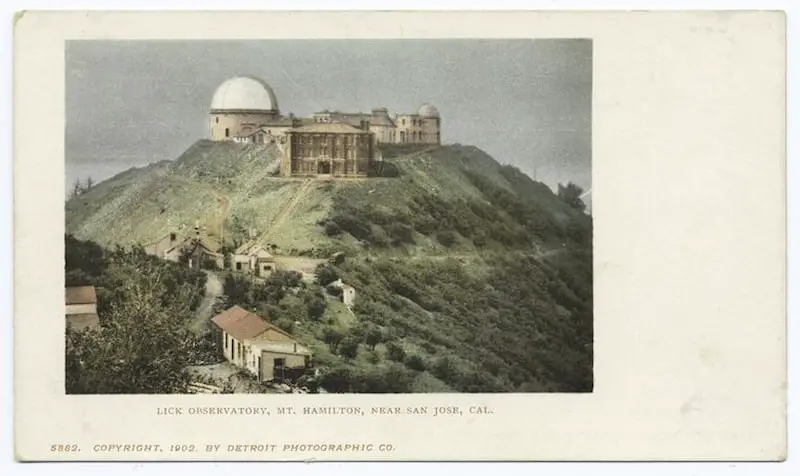
San José in 1972
See what the city looked like in 1972, when the San Jose Chamber of Commerce produced this promotional film.
Includes Cambrian Park, the old City Hall, Santa Clara University, San Jose State College, O’Brien’s Candies, Bettencourt’s Market, the Farmers’ Union, and Normandin’s Plymouth De Soto.
Greater San Jose (1951) – California Pioneers of Santa Clara County on YouTube
San José in 1972
In 1972, student Louis Ventura, Jr. made a short film about the city.
Aerial views of the city provided on a flight by Cliff Hodges from Aero Trends at Reid-Hillview Airport
Locations include Frontier Village, Eastridge Mall, San Jose Municipal Airport, San Jose Municipal Rose Garden, Alum Rock Park, Backesto Park, the Rosicrucian Museum, Vasona Park, Oak Meadow Park, William Street Park, and the Winchester Mystery House.
San Jose – A City To See (1972) – California Pioneers of Santa Clara County on YouTube
If you own any vintage home movies showing California’s past communities, please consider donating them to the archives of the California Pioneers. The California Pioneers of Santa Clara County are a non-profit historical organization who aims to preserve & promote history and encourage research & scholarship.
A Bit of San Jose History
Extract from:
Bishop’s Directory of the City of San Jose for 1876
Containing a General Register of the Names of All Residents, and a Classified Business Directory … : Also a Directory of Santa Clara, Containing a General Register …
Published in 1876
Pages 5 – 9
History informs us that the site upon which the City of San José is built was first occupied in 1777 as an outlying post, the headquarters of Spanish military authority in Upper California being at the Presidio of San Francisco.
The surpassing fertility of the soil, and especially its adaptability to the culture of the cereals, led to this early occupation and settlement.
Thus while the war of the Revolution was being fought upon the soil of the Atlantic Colonies, Spain was extending her peculiar civilization on the Pacific, and her pioneers almost invariably selected the most favored spots.
If their settlements did not have a rapid growth, if they languished in primitive rudeness and poverty, it was not owing to lack of natural resources, but to the peculiar circumstances of their isolation and to the habits, ideas, and temperaments of the people.
The strong and redeeming fact remains, that the early Spanish settlements indicated to their more enterprising followers the proper and natural sites for large cities and prosperous towns.
San José is a noteworthy example of the shrewdness of the first settlers in determining the ground of occupation for a center of trade that should control the exchanges of rich and extensive valleys, and of the vast scope of surrounding hill and mountain lands, the productive capacity of which has been very imperfectly estimated, and which is destined to astonish all when the period of its full development shall arrive.
For purposes of building, the location is excellent. Sufficiently elevated to avoid the dangers of high water in the Guadalupe and Coyote, and with a gentle slope that secures a good system of drainage, there are no heavy and expensive grades.
Though San Jose is an inland city, there exists no necessity that she should remain an inland city. The distance to the headwaters of the Bay of San Francisco is short, and there are no formidable engineering difficulties to encounter in the construction of a ship canal, through which the largest vessels might enter, and San José become an important commercial mart. We will not, however, dwell upon what, in the rapid progress of events, may be the future destiny of this promising city, but will present a view of what she is, and glance at the resources she possesses, which constitute her power of advancement.
The annals of modern San José commence with the survey of the town site in 1847. The first Legislature of California convened here in the winter of 1849-50, and again the following winter, when it removed to Vallejo.
The effect of the removal of the capital upon the permanent prosperity of the city is not appreciable. The city might have been somewhat larger and wealthier today had it been constituted the capital of the State, but there is no reason to suppose that the absence of any one institution can materially affect a city whose life and growth are the results of natural location, and are sustained by a large number and variety of reasons. And it is certain that the atmosphere is purer than it could be with a huge political machine located within its borders.
San José is located on the line of the Southern Pacific Railroad, fifty miles south of San Francisco, and sixty – five miles north of Hollister. It has railroad connection with the fertile Pajaro Valley and with the old seaport town of Monterey, the capital of California under the old Mexican regime. The Western Pacific Railroad intersects with the Southern Pacific at this point, running northward on the east side of the bay, and connecting at Vallejo Mills with the Central Pacific.
The business portion of the city is substantially and handsomely built up of stone, brick and iron, presenting to the view a thoroughly city – like appearance.
Among the more prominent buildings, we may mention the two splendid public market buildings, which are not exceeded in architectural beauty and solidity by any similar structures on the coast. The building of the Bank of San José, the San José Savings Bank, the Commercial and Savings Bank, the Auzerais House, the Academy of Music, the Hensley Block, the Wilcox Block, the Knox Block, and Arquilla’s Block, the compactness of the business part strikes the observer favorably.
The sidewalks are of concrete, and awnings very generally protect from the sun and rain. In every direction from the business center wide shaded avenues stretch out until their outlines are lost in the distance.
There are three public parks in the city and a city reservation for park purposes, comprising over four hundred acres, located to the eastward, and reached by a pleasant drive. The scenery of this embryo park is of the most diversified and romantic description.
The Court House is one of the finest in the State. Its cost was over $200,000. It is in the Roman Corinthian style of architecture, and is indicative of the substantial ideas of the community of which it is the seat and temple of justice.
The County Jail is very strongly built, costing $80,000.
The State Normal School Building we have described elsewhere.
The College of Notre Dame is a large and flourishing institution, with costly and extensive buildings and grounds. There are four first – class school buildings, two of which are of recent construction.
Private residences of the “palatial” order are numerous, but what is better, the cosy, tree-embowered cottage and modest homestead of the tradesman and artisan are more numerous and form the great groundwork of this representative American city.
A City possessing so many attractions and such a diversity of resources as San Jose cannot fail to continue in growth, and to become a large and important city. It is fair to estimate the capacity of the Valley for development and production at twenty times that already attained. San José is the natural and inevitable center for the trade of this vast productive industry.
Its population will be augmented even more rapidly than that of the surrounding country, inasmuch as it will draw largely from the Commercial Metropolis of the State; that element of population which, having abundant wealth, seeks retirement.
To sum up, we may recite the following as chief among the causes which ensure to this city an importance in the future second, on the Pacific Coast, only to San Francisco.
First, Agriculture. It is safe to estimate the capacity of the tributary country at five million bushels of wheat, besides a considerable production of barley, rye, oats, corn, peas and beans. The culture of hops has already become an important industry, and bids fair to attain to ten-fold greater results. The quality of Santa Clara Valley hops is acknowledged superior to any other in the great hop markets of the world. Stock and sheep raising may be carried on to an almost unlimited extent, the climate being highly favorable; and the foot-hills, ravines and mountain sides, for leagues around, furnishing abundant pasturage.
The valley land we hold as too valuable for stock raising purposes. Fruit, in all its varieties, can be produced both in the valleys and on the foothills. Strawberries are already an important article of shipment to San Francisco, and there exists no reason why the value of this product alone should not eventually add a half million dollars annually to the wealth of the city and neighborhood. All other fruits of the temperate zone, as well as several of the semi-tropical varieties, flourish. Thus we see here a partially developed Garden of Eden, so far as its capacity for fruit production is concerned, awaiting the entrance of intelligence and enterprise, and holding forth no threats of expulsion if its delicious fruits are plucked and eaten. The culture of the vine and the production of wine is extensive and profitable, and may be largely increased. Intelligent labor is all that is needed to give an impetus to grape culture that will place it at the head of the paying industries of the valley.
We have mentioned a few of the leading productions. Reference to the table on another page will show the reader what progress has already been made, and upon that progress a safe estimate of the future can be based. It is the land of plenty; the land of the vine and the fig – the land of corn and wine.
DeQuincy wrote of Russia, buried in snow, that “she has it in her power to entice an enemy into vast circles of starvation – the radii of which measure a thousand leagues.” This beautiful city of the valley has it in her power to entice a multitude to her borders, as friends, to abide in comfort and luxury, as the reward of intelligent and well-directed labor.
Educational Facilities
San José has the State Normal School, the most important and useful educational institution in the State. Several hundred students attend annually.
The presence of such a large number of young men and women from abroad, in our midst, adds much to the social attractiveness of the city as a place of residence, besides augmenting its retail trade.
The College of Notre Dame draws also a large attendance from abroad, as does the Business College of Vinsonhaler and the San José Institute.
The University of the Pacific is among the most prominent institutions of its class in the State, and the Santa Clara College is not surpassed either in the completeness of its course or in the widely extended range of its influence.
So many first class institutions of learning, entitle San José to the claim of being the educational centre of the State, and their combined influence adds largely to the material prosperity of the city.
Of manufacturing we have spoken elsewhere. This city has all facilities within reach, and if she will but grasp them, she may become the Birmingham of the Pacific.
The Lick Observatory
The donation by James Lick of a munificent sum for the establishment of an observatory on Mount Hamilton, and the construction of a telescope to exceed in power the largest now in the world, is a source of much pride and gratification among the citizens of San José.
Mount Hamilton is in plain view from the city, and a good wagon road will be speedily completed to the summit.
“The largest telescope in the world” will attract many scientific men thither, Mount Hamilton will become world-renowned, and all the renown will be shared by the city at her foot. It is a grand acquisition, and quite unparalleled.
What names of illustrious scientists from the old world and the new will yet be registered at the hotels of San Jose, and partake of the hospitalities of her citizens! It is an important and appropriate addition to her higher educational facilities, and one that is a subject of just and commendable pride to the city.
Her attractions as a place of residence, the genial climate – never cold and never excessively warm, the sun’s rays being tempered by breezes from the sea – attracts many people from abroad.
The atmosphere is pure and clear, the scenery is charming, and rents and living are far cheaper than in San Francisco.
A few people whose business is in the metropolis reside here; and were the time required in transit between the two cities reduced one half, a large number of business men would avail themselves of the advantages to be obtained here and make homes in our midst.
Rapid transit will probably be secured shortly, and then this new element of growth will be added to many now combining to double our population every five years.
The population of San José is variously estimated at from 15,000 to 18,000. The register of names in this Directory numbers 5,874, which indicates a population of 17,472.
More about California
- California Gold Rush Facts
- Old Images of Stockton, California
- Old Images of Santa Rosa, Califonia
- Old Images of Santa Ana, California
- Old Images of San José, California
- Old Images of Riverside, California
- Old Images of Oakland, California
- Old Images of Long Beach, California
- Old Images of San Bernardino, California
- Old Images of Redlands, California


